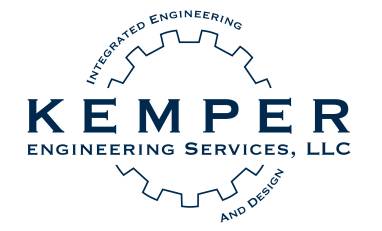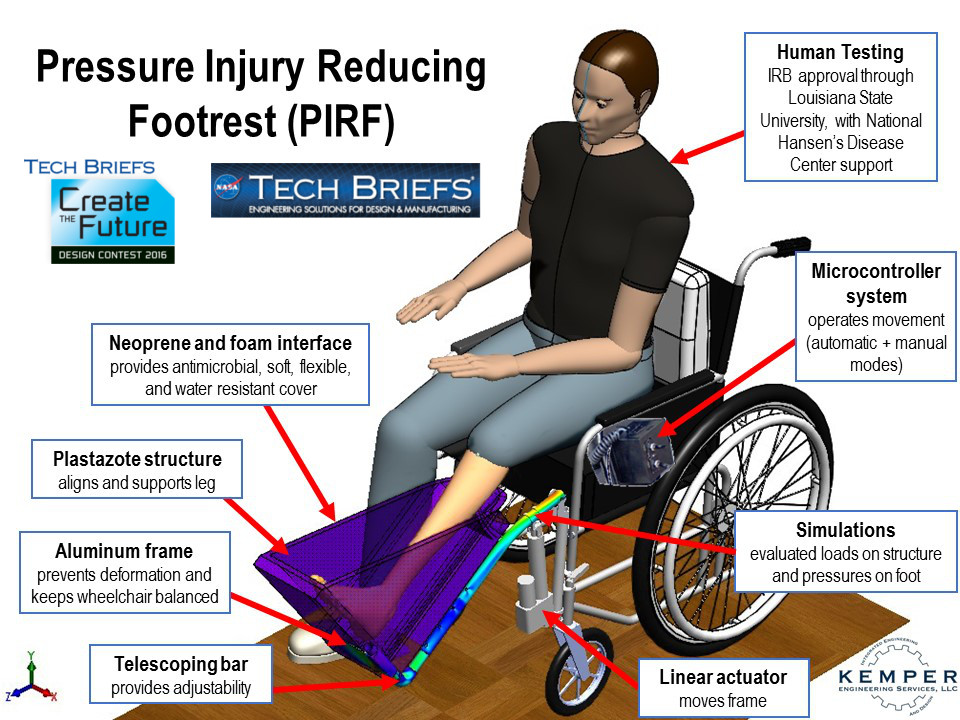Go here to vote for our entry, the Pressure Injury Reducing Footrest
Amy Pinner joined KES as a college intern from Louisiana State University in 2012. As she approached her final year in school in 2013, she knew she wanted to do something significant for her Capstone Design project. The LSU Capstone Engineering course is a 2 semester process where you design it in the first semester, then build and test it in the second. The projects are generally real-life needs, many coming from industry. This project is truly “real life,” where the problem is how to help prevent infections, amputation, and even death amongst the millions who have health conditions which can lead to pressure injuries.
Amy’s motivation to become an engineer was from her father, a chemical engineer who was paralyzed for two years prior to his death. In talking with a friend of the family, who was a paraplegic, she became aware how pressure injuries can cause infection, amputation, and even death. She brainstormed the project with Bart and Krista then got the project approved by LSU. Using funding from KES she led her team to not only successfully design and build it, but through their team’s biological engineer, Linda Cross, they were one of the first Capstone teams to get Institutional Review Board (IRB) approval through LSU. Paraplegic and quadriplegic volunteers from the National Hansen’s Disease (Leprosy) Center were part of the testing, giving insights not possible from volunteers who have full use of their limbs. The team went on to take 3rd Place in the ASME/NSF Undergraduate Design Competition for Rehabilitative Devices.
Read Amy’s story here (LSU College of Engineering)
Krista had coached the team while Bart supported the effort from Afghanistan while he was deployed as a US Army Corps of Engineers officer. They continued with the project while Amy and Linda took jobs after graduation in 2014. Both are Army combat veterans and Krista is disabled, often having to use a cane and occasionally a wheelchair. Their motivation is the many veterans who have to deal with pressure injuries, whether it is due to combat or long-term issues from serving in the military.
In 2015 Linda came to work at KES, in part to help keep the project going. As a biological engineer and a year of working in medical research, she has taken over as the project lead. We have continued the work as a team and have developed techniques to address a wide range of pressure injuries. We are now in the NASA Tech Briefs “Create the Future” Contest. Wish us luck and please consider voting for our project. Go here to see our entry, the Pressure Injury Reducing Footrest .
We have also profiled this as company project, which can be seen here. We need your votes.


Recent Comments